Haworthiopsis reinwardtii, formally known as Haworthia reinwardtii, is an ornamental succulent native to the Eastern Cape Province of South Africa, similar to Split Rock succulent. It’s often confused with Haworthiopsis coarctata, which is closely related and has a similar appearance.
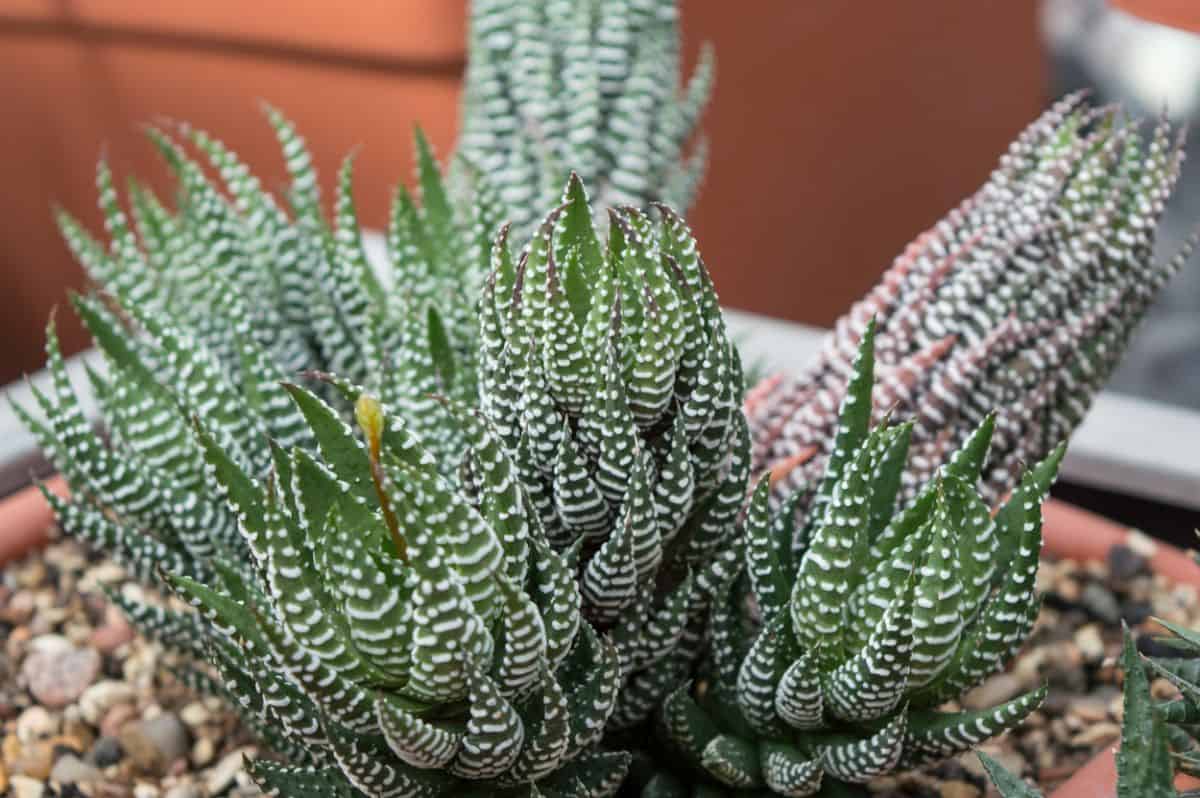
H. reinwardtii is also sometimes known as African Pearls, due it’s long stems and pearl-like leaves arranged in columnar rosettes.
Jump to:
Haworthiopsis reinwardtii Appearance
| Name: | Haworthiopsis reinwardtii |
| Soil: | Well draining soil |
| Blooming: | Spring |
| Light: | Bright, indirect light |
| Water: | When the soil is completely dry |
| Propagation: | Cuttings, offsets and seeds |
This small succulent has elongated rosettes of thick leaves covered in white spots. The tips of the leaves can blush a deep maroon when the plant is exposed to more light. The stems of Haworthia Reinwardtii can reach up to 8 inches in height.
These succulents produce offsets frequently, which allows the plant to spread in a mat-like fashion. In the spring, H. reinwardtii produces clusters of tubular, pinkish-white flowers.
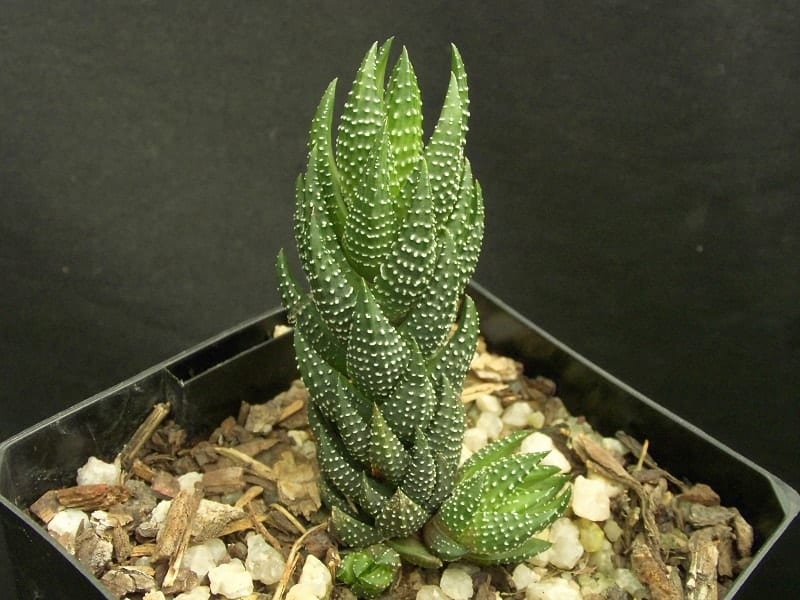
Buy it from:
Haworthiopsis reinwardtii can be distinguished from Haworthiopsis coarctata by its larger, flatter tubercles and narrower leaves. The leaves of Haworthiopsis reinwardtii also tend to be much thinner than those of Haworthiopsis coarctata.
Caring for Haworthiopsis reinwardtii
If you’re looking for a low-maintenance succulent, look no further than Haworthiopsis reinwardtii. This a great succulent for beginner and experienced gardeners alike. It is a forgiving plant that can tolerate imperfect care, so long as it’s not consistent.
As an added bonus, this succulent is non-toxic to both humans and pets, so feel free to plant them anywhere children and furry family members may roam. However, it’s still not recommended to consume this plant as it can cause stomach aches, so it’s important to discourage pets and kids from eating it if possible.
Light
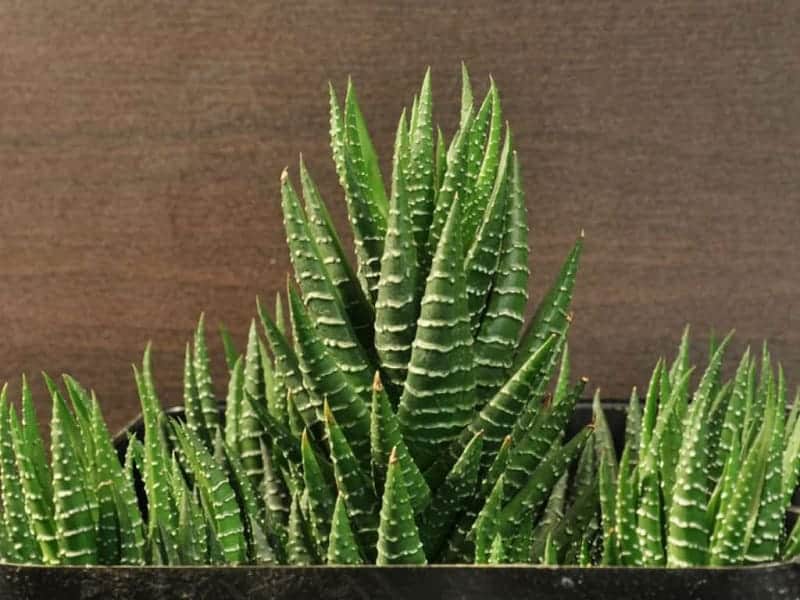
Haworthiopsis reinwardtii is ideal for an indoor succulent garden. Bright, indirect light is ideal for these plants, so try to set them in a place a few feet from a sunny window.
If your African Pearls do not receive enough sunlight, they can become etiolated, or stretched out. They may also begin to lose their vibrant green coloring.
If you believe your Haworthia Reinwardtii isn’t getting enough light, consider supplementing any natural light with artificial light. Grow lights come in a range of shapes and sizes to suit any indoor space.
No products found.
A full spectrum grow light may be just what your H. reinwardtii needs to thrive. You may also want to consider moving it outdoors in warmer weather or if the climate allows.
When grown outdoors, they prefer partial sun or partial shade. Planting these succulents in containers is a great idea as you can move their location to suit their light needs if you aren’t yet sure of the perfect placement.
Any time you’re increasing your succulent’s light levels, it’s crucial to do so slowly to prevent sunburning. Sunburn isn’t necessarily deadly, as long as the plant’s light levels are decreased as soon as possible. Prolonged periods of time in too much sun will kill the succulent.
Sunburn is mainly cosmetic in terms of damage and it’s impossible to repair once the damage has done. Burned areas of the plant can be trimmed away, or you can just let it be until the new growth replaces the burned parts.
To minimize risk to your Haworthiopsis reinwardtii, increase light levels slowly over a period of several weeks. This will give your plant time to adapt without putting its health or beauty at risk.
Water
As with most succulents, Haworthiopsis reinwardtii does not tolerate overwatering. A proper watering schedule, combined with the right soil, will set your succulent up for success.
This succulent prefers to be watered deeply but infrequently. Always remember to allow the soil to dry out before giving the plant additional water.
It’s essential that you test the soil moisture levels each and every time you plan on watering your Haworthia Reinwardtii. This can be done by inserting a soil moisture meter a few inches into the soil. You can also test by using your finger to see if the soil feels dry or moist.
If the soil is moist, watering can wait for a few days. If the soil is dry, the succulent is ready to be watered. This method is the best way to prevent overwatering.
However, your watering schedule may need to change depending on the season, especially if your succulent is planted outdoors.
During the heat of the summer, many plants require more frequent watering as the moisture evaporates much more quickly. In winter, or in humid climates, you may need to water less frequently to account for less moisture loss.
Rather than watering on a set schedule, be sure to check your Haworthiopsis reinwardtii prior to watering.
If you’d like more information on how to water succulents, read our guide here.
Temperature
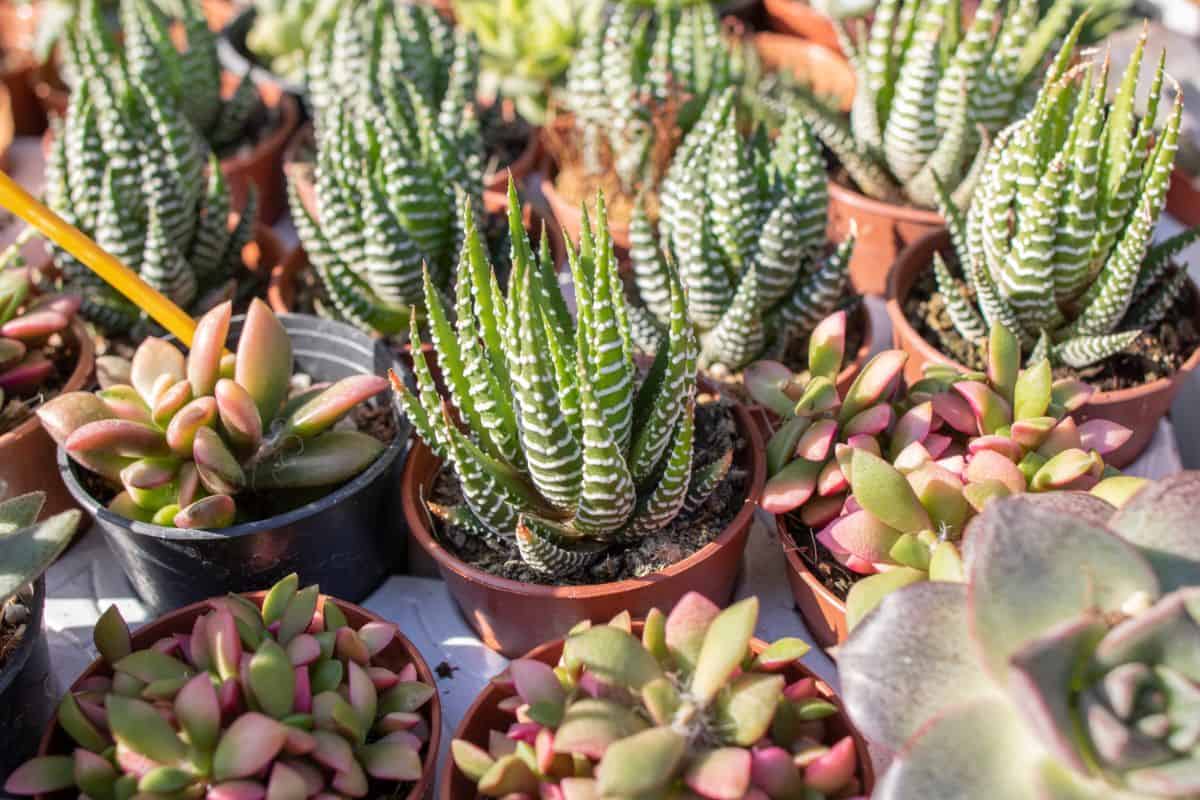
Haworthiopsis reinwardtii is not a frost-hardy succulent, so it must be protected from freezing temperatures. As with most succulents, the fleshy leaves contain so much moisture that freezing can cause the cells to burst.
If your succulents are planted outdoors and you expect temperatures to drop below freezing, it’s recommended to bring them inside if possible. You can also cover them if you’re unable to move them indoors.
African Pearls aren’t particularly sensitive to heat, but they should be kept out of direct sunlight during the hottest parts of the day. Extreme heat combined with direct light will surely result in sunburn.
More frequent watering can also help your succulents survive heatwaves, but make sure you aren’t accidentally overwatering them.
Soil
As with most succulents, Haworthia Reinwardtii prefers well-draining soil with few water-retaining ingredients. Avoid soil ingredients like clay and peat moss in favor of larger particles like coarse sand, gravel, and perlite.
Any commercial soil mix formulated for use with succulents and cacti should work fine. These soils usually contain little, if any, clay or peat moss.
If you’re the DIY type, you can also make your own soil mixture by combining well-draining ingredients.
Haworthiopsis reinwardtii Propagation
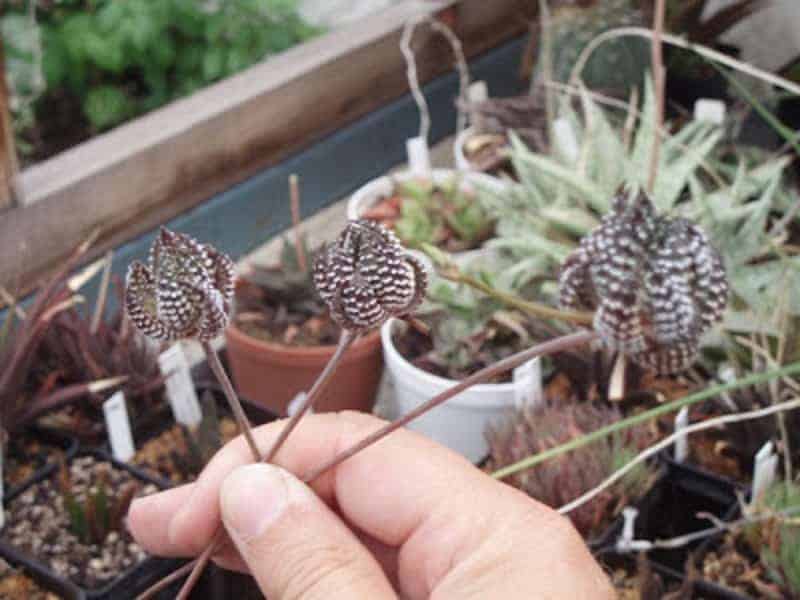
If you’re looking for an easy succulent to propagate, H. reinwardtii is the succulent for you. It can be propagated easily, using a variety of methods. This is a great plant to start propagating with, so if you’re new to succulent care, start here.
Offsets
Haworthiopsis reinwardtii grows in clumps, so using offset separation is an easy, quick way to get new plants. Offsets, or pups, can be separated by gently cutting them away from the mother plant using a sharp, clean knife.
After separation, allow the offsets to dry out for a few days to let the cuts callous. This protects the new plants from infection and gives them the best chance of success.
Once dry, the offsets are ready to plant in the container of your choice. To care for these tiny African Pearls, simply treat them as you would a mature plant.
Cuttings
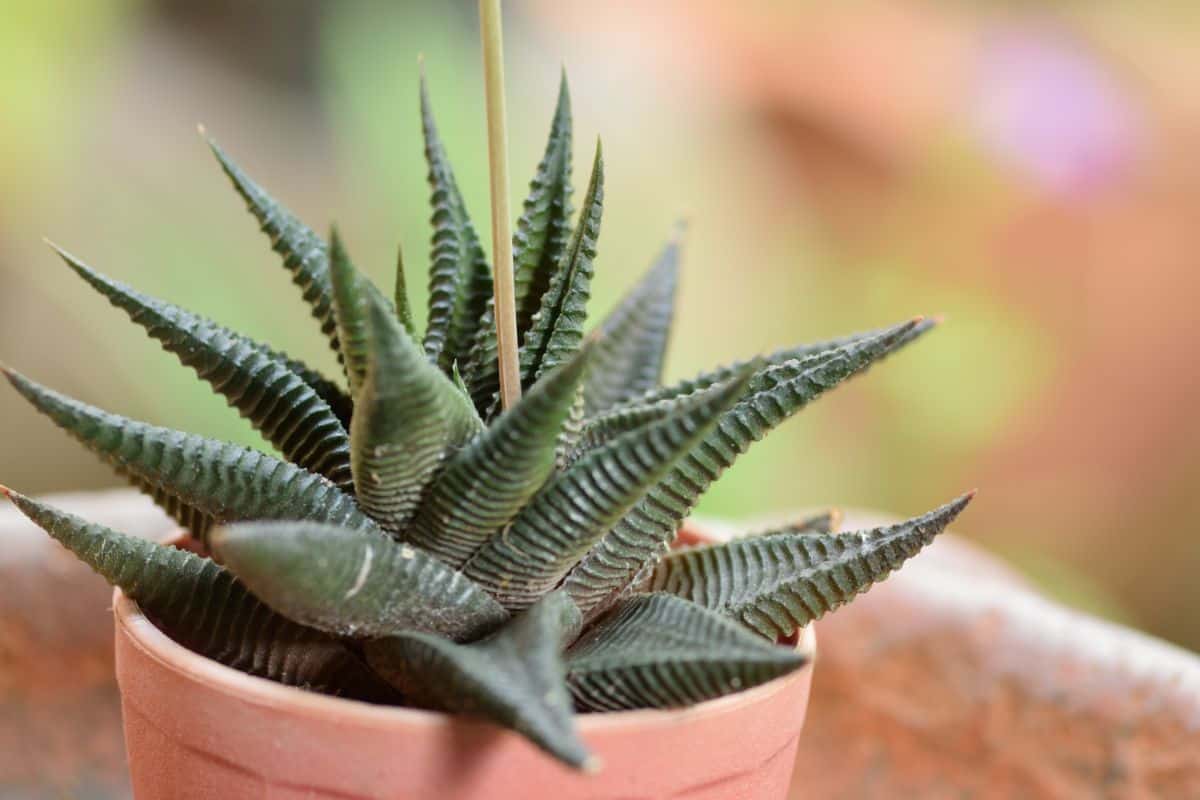
Leaf or stem cuttings are also a great way to propagate Haworthiopsis reinwardtii. Cuttings can be taken using a clean, sharp knife or pair of shears.
As with offsets, cuttings must callous before planting. They may also be dipped in rooting hormone powder to encourage faster rooting. Once the cuttings have calloused, the cuttings can be placed on the soil to await root growth.
With any luck, you should begin to see roots and tiny rosettes developing within a few weeks.
Seeds
If you’re a patient gardener, you can also propagate Haworthia Reinwardtii by seed. Seeds can be collected from your current succulent collection or you can buy them online.
Simply sow the seeds in moist, well-draining cactus or succulent soil and keep covered to prevent the loss of heat and moisture.
Keep the soil moist, but not wet. After a few weeks, you should see tiny seedlings sprouting. At that point, you can remove the cover and begin to treat them just as you would any other Haworthiopsis reinwardtii.
Sources:


